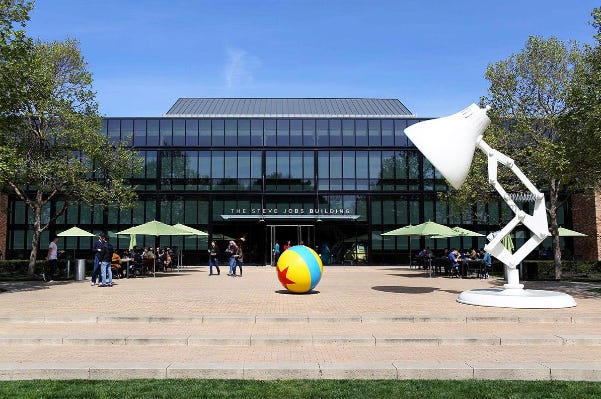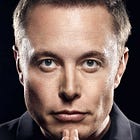Steve Jobs - Legend or History?
Steve Jobs is one of the most controversial leaders in the tech history. Does his legacy still live on?
Steve Jobs is an extremely controversial leader.
From being a visionary leader who rescued Apple from bankruptcy to being a rude person who throws his tantrums at random waiters.
But, does his legacy still live on? Is Apple today the same Apple in the Jobs era?
An insider take by a Staff Engineer at Apple will reveal the answer.
Before we reveal the answer, let’s first see what sort of leader Jobs was to understand how big the change is or is not.
If you’re short on time, here’s a summary of the points:
Summary
Radical Innovation: Using his intuition to bypass trends.
Binary Thinking: An either/or view that created intense workplace dynamics.
Merging Technology with Design: A commitment to the aesthetics and functionality of products.
Dictatorial Leadership Style: A relentless pursuit of perfection through demanding leadership.
Emphasis on Product over Profit: Focusing on innovative products to drive future profitability.
With that out of the way, let’s dive deeper and figure out who Steve Jobs was as a leader.
1. Radical Innovation
One of Jobs’s most defining characteristics is his confidence in the strength of his own intuition. It lets him see possibilities that others would miss.
“Imagination is more important than knowledge”, said Albert Einstein.
And even when Jobs was wrong about his predictions, instead of dwelling on how to face the actual trend he missed, he’d look for the next one. He always looked one step ahead.
For example, Jobs failed to anticipate the popularity of burning music on CDs in the early 2000s and the iMac included a CD-ROM without the ability to burn music into CDs.
Instead of building a new version to adjust to the new trend, Jobs moved on to the next trend, the MP3, and launched the iPod. This made user-created CDs obsolete.
2. Binary Thinking
Jobs’s worldview style was binary — either something’s fantastic or it’s awful. Either a person is a genius, or stupid. Every idea was either brilliant or rubbish.
Jobs is also known for being vocal with his opinions about others and he would use them to build people up or tear them down (again, binary). Sometimes people would experience both at the same day.
That made people eager to please him and terrified to fail him.
This type of behavior was not only hurtful to his staff and the morale in the office, it extended beyond it and he would sometimes throw his tantrums at anyone he interacted with — be it a waiter or a hotel staff.
Despite the challenges, those who worked and thrived under Jobs are those who learned how to reinterpret his madness and push back against him as hard as he did.
3. Merging Technology with Design
Jobs was obsessed with the aesthetics of design and he believed that technology should not only function well but also look and feel beautiful. He got his artistic mind and an appreciation for well-thought designs from his father, a machinist and auto mechanic.
This philosophy is evident in every product Apple has created under his leadership and beyond. From sleek MacBook designs to the iconic look of the iPhone, every product looks and feels like a million dollars.
Jobs understood that the way a product made the user feel was just as important as its technical capabilities. And this focus created something beyond a love for the product.
It created a deep loyalty among Apple users. Some would even call it a cult.
Jobs would pay more and wait longer for the iPhones to be and feel exactly right instead of taking the shorter path and using larger and clunkier solutions.
4. Dictatorial leadership style
One of the things Jobs is most known for is his relentless pursuit of what he wanted. Once he had an idea in his mind that he wanted, whether it was a specific design for the iPhone or a particular shade for a computer, he wouldn’t stop until he got it just right.
Jobs’s laser focus on minute details would often result in delays, cost increases, total redesigns, and overworked employees.
One of the most ridiculous demands was that the NeXT computer be a perfect cube, regardless of its engineering needs. ¯\_(ツ)_/¯
Despite his tyrannical behavior, he had a skill for creating group collaboration. At that time, many companies were fractured and split into divisions that competed against each other.
For example, Jobs designed Pixar’s new building in a way that teams working on different film projects weren’t segregated. They’d be forced to interact, even if by accident.
For a deeper dive into Job’s relationship with Pixar and Disney, we highly recommend reading Creativity Inc., which we covered in 5 unexpected lessons from Pixar and Disney.
5. Emphasis on product over profit
Jobs’s motivation was beyond the company’s bottom line. It wasn’t maximizing profits, but delivering the best product possible.
Unlike many other business leaders, Jobs’s priority was on creating great products now and worrying about profits later. He believed that if Apple focused on making the best products, financial success would follow.
This approach drove the company to take risks and innovate in ways other companies would not. And it paid off.
The best example is the development of the Macintosh and the iPhone.
Macintosh
The team had significant challenges such as designing a graphical user interface that was both user-friendly and resource-efficient in the form of creating a high-resolution display and a mouse that was simple and intuitive.
Despite delays and increased costs, Jobs’ commitment to quality set a new standard for personal computing.
iPhone
For the iPhone, the challenges were even harder. Apple had to develop a touch-screen interface that was accurate and responsive and integrate multiple functions (phone, music player, and internet device) into a single device while ensuring a long battery life. In addition, the iPhone’s sleek design demanded miniaturization of components.
The rest is history that we’re all familiar with.
Final words
When I asked the insider “What of that is still true in today’s Apple?”, this is what he said:
I really want to say none, at least from what I've seen so far. The reason is the Jobs examples that gets popular is from a completely different time for Apple than it is today.
Now apple is nothing but a mega corporation, just like Microsoft, amazon.
There is no leader running around and shouting at people. Political correctness matters all across (this was not just Steve but Jeff's issue as well)Even if you look at Elon today, he doesn't care about political correctness much. Being radical is what separates them from the herd.
In short, it seems like nothing has lived on from Jobs’ leadership.
He built a very strong foundation that was changed over time to fit today’s world and be stronger than ever.
P.S.
We have another summary of a book by Walter Isaacson. Elon Musk’s biography.








This is a great distillation of Job's style. It was a brilliant idea to ask an insider.
Thanks for the shoutout, Orel!